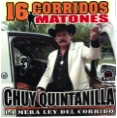Mexican Cartel Tactical Note #19: Sniper Rifle Use in Mexico
Robert Bunker and Jacob Westerberg
This tactical note was prompted by discussions and inquiries related to the February 2013 Los Zetas sniper incident that took place in Apodaca, Nuevo Leon and an earlier December 2012 interview with Borderland Beat on Mexican cartel weaponry use patterns and tactics. In that interview one of the authors made some assumptions about .50 cal use potentials. It is now clear, after additional research has been conducted, that cartel use of snipers is more frequent than many of us had suspected and is of significant concern to the Mexican military. Additionally, one or more .50 cal rifles were utilized at least twice in an anti-helicopter role in related incidents in May 2011 in the area of Apatzingan, Michoacan.
Key Information: Primarily Spanish language sources: Victor Hugo Michel, “Calibre .50. ¿Francotirador del narco?” Milenio. 21 Noviembre 2011; Victor Hugo Michel, “Comprar una Barrett, toda una ganga en EU.” Milenio. 22 Noviembre 2011; Jorge Alejandro Medellin, “¡Alerta, francotiradores!, los tienen en la mira.” El Universal. Viernes 27 de Abril 2012; and “Francotirador ejecuta con fusil calibre .50 a mando policiaco de Nuevo León.” Proceso.19 de Febrero de 2013. Also U.S. Governmental documents, news reports, and social media sources in English and Spanish including Borderland Beat.
Who: Sniper rifles were utilized in documented incidents by the Arellano Felix Organization (AFO), Beltran Leyva Organization (BLO), The Federation/Sinaloa, La Familia Michoacan (LFM), and Los Zetas. These rifles are also (or have been) in the possession of the Cartel del Golfo (CDG), Juarez Cartel, and the Knights Templars, however, incidents of use have not been documented in this note [1].
What: Nine identified incidents in which sniper rifles, all of which were .50 caliber Barretts, were utilized against Mexican military and law enforcement personnel, vehicles, and air assets are identified in this tactical note. According to SEDENA, between 1 June 2007 and 22 June 2011 at least 10 soldiers were killed by snipers [2]. Since all of these deaths are not reflected in the nine identified incidents, this dataset is incomplete. Further, cartel-on-cartel incidents have not been documented. The assumption can be made, based on known homicide patterns, that these incidents will outnumber cartel-on-Mexican military and law enforcement personnel sniper incidents. Hence, this data set should be considered fragmentary at best.
When: The documented incidents took place from January 2008 through February 2013.
Where: Sniper rifles have been used in the Mexican states of Baja California, Chihuahua, Michoacan, Nayarit, Nuevo Leon, Sonora, and Tamaulipas per the nine identified incidents. Additionally, such rifles have also been seized in the states of Durango, Sinaloa, and Veracruz. [3] In total, at least forty-two .50 caliber sniper rifles have been seized from the cartels by the Mexican government between 2007 and 2011. Additionally, another twenty of these rifles were seized by the U.S. ATF on the border between 2009 and 2010 before they illegally left the United States on their way to Mexico. [4]
Why: .50 caliber Barrett rifles provide superior standoff capabilities and penetrating power when engaging antipersonnel and antimateriel point targets. They represent a preferred type of sniper weapon when combined with the proper optics/scope and also can be utilized in a combined arms role with cartel commando elements equipped with infantry small arms such as assault rifles (with grenade launchers), fragmentation grenades, and rocket propelled grenades and personnel protective gear such as ballistic vests and helmets.
Photo 1 &2: Cartel del Golfo (CDG) Barrett .50 cal
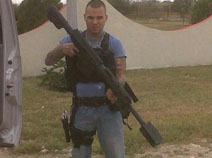
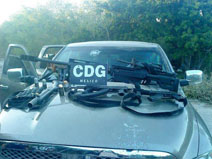
[Photo 1— From social media site of a purported CDG member, undated; note gold plated pistol handle, gold necklaces, arm tattoos, and military style haircut.
Note 40mm grenade launcher and rounds, small arms, and ballistic damage to the windshield and hood/grill denting from an earlier engagement].
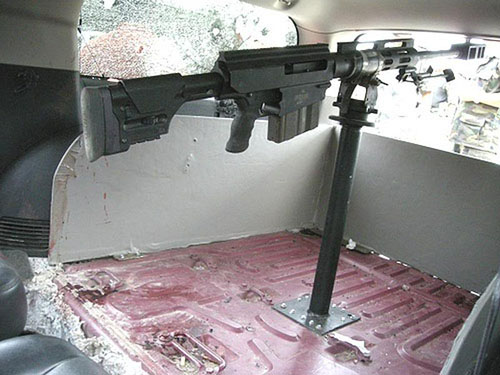
Photo 3: Barrett .50 cal Vehicular Mount
[Social media posted May 2011; unidentified cartel. Note ballistic damage to passenger rear window and armor plating for crew protection. Internal vehicular mounts allow for camouflage, a stable firing platform, and weapon mobility]
Photo 4: Damage to UH-60 Helicopter. 29 May 2011 Michoacan Incident.

“During a trip to Mexico City on June 25, 2011, Members and staff from the U.S. House of Representatives Committee on Oversight and Government had an opportunity to visually inspect the damaged helicopter. Several bullet holes were evident on the body of the aircraft, and one round from a .50-caliber rifle penetrated the thick “bullet proof” glass windshield.” Source: The Department of Justice’s Operation Fast and Furious:
Fueling Cartel Violence, 2011: 59. [5] [For Public Distribution]

Analysis: Mexican cartel sniper use incident information is sporadic and fragmentary. What is clear is that sniper rifles have been used both offensively for assassinations (targeted killings) and as part of integrated combines arms tactics to support the movements of cartel enforcement units and defensively to cover the withdraw of forces in urban combat, to protect safe houses, and to cover avenues of approach into cartel territories. One unofficial report suggests that the Juarez cartel would utilize up to four Barrett rifles to provide cover over sections of a highway. In addition, it was reported that Mexican law enforcement and government officials riding in armored vehicles (assumed SUVs with armor kits) have been killed by cartel snipers [15].
Photo 5: Seized Zetas (Single Shot Bolt Action) Sniper Rifle.
Villa Unión, Coahuila. Undated.
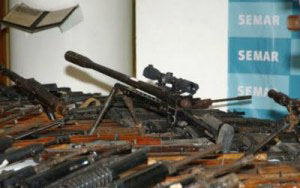
[Mexican Marines (SEMAR). For Public Release]
Images of cheaper grade .50 cal and smaller caliber long rifles with scopes are also evident in some of the cartel weapons seizures. These weapons have undoubtedly been utilized in targeted killings but the frequency and circumstances of that use is unknown [16]. Also of note is that in November 20, 2009 in Naco, Sonora a Beowulf .50 caliber rifle was recovered from the cartels [17]. This weapon is unique in that is it based on the AR-15 model and is intended for short and moderate ranges. As a result, it represents a highly portable armor penetrating rifle that can be used in antipersonnel and antimateriel (such as to destroy engine blocks) roles. In a sense, it can be considered a close-in urban sniper rifle with its shorter lines of sight capabilities [18].
Many questions exist about the quality and training of Mexican cartel snipers. This is because the engagement ranges and specifics of most of the sniper incidents are not provided. The February 2013 Apodaca, Nuevo Leon incident— in which a police official was killed while entering his residence— had a standoff range of about 66 yards which does not require a high level of training. On the other hand, the 2008 Tijuana incident in which a Mexican special force soldier was killed while riding on an armored vehicle and the May 2011 incidents in which Mexican Federal Police helicopters were targeted suggest higher levels of sniper competency.
Since substantial numbers of Mexican special forces personnel have defected to the cartels over the years, it can be assumed that some cartel snipers have superior levels of training. Whether many of these cartel operatives with former military sniper training are still being deployed is unknown. Of note is that fact that a review of hundreds of images of cartel weapons seizures and social media postings has not yielded any images of optics for spotters/long range surveillance devices. This may suggest that extreme standoff ranges are beyond the engagement capacity of Mexican cartel snipers and that they are not deployed with spotters—but this is only speculation.
Mexican Governmental Response: The use of .50 caliber Barrett rifles by the cartels has become a significant issue for Mexican military forces. This has prompted the Mexican government, by at least mid-to-late 2011, to begin looking into the purchase of sniper detection (acoustic gunfire detectors/shotspotters) from various European companies. One such system, the French 01db-Metravib, is about 20 years old and was designed as a countermeasure to sniper attacks taking place against peacekeepers in Bosnia and Sarayevo. It was scheduled to be demonstrated to the Mexican Army (SEDENA) in May 2012 at a military base in the state of Mexico [19]. Additionally, it can be expected that, in tandem with the potential fielding of such sniper detection systems, dedicated Special Forces or Army counter-sniper units armed with their own .50 caliber Barrett rifles will be deployed. These units would likely be available to augment pre-existing SEDENA and Mexican naval (SEMAR) snipers attached to infantry units deployed in regional hot spots such as in Michoacan and Tamaulipas as required.
Reference(s):
[1] In addition to the nine incidents of sniper rifle use in Mexico by the cartels, about two dozen distinct seizure/recovery incidents of sniper rifles from the cartels have been identified while researching this tactical note.
[2] Jorge Alejandro Medellin, “¡Alerta, francotiradores!, los tienen en la mira.” El Universal. Viernes 27 de Abril 2012, http://www.eluniversal.com.mx/nacion/195989.html.
[3] Victor Hugo Michel, “Calibre .50. ¿Francotirador del narco?” Milenio. 21 Noviembre 2011, http://www.milenio.com/cdb/doc/noticias2011/46f0d414226d25e2a5d84a0f19f01749.
[4] Victor Hugo Michel, “Comprar una Barrett, toda una ganga en EU.” Milenio. 22 Noviembre 2011, http://www.milenio.com/cdb/doc/noticias2011/9ba077ad272132591cfa416dc171d54d.
[5] Joint Staff Report, The Department of Justice’s Operation Fast and Furious:
Fueling Cartel Violence. Prepared for Rep. Darrell E. Issa, ChairmanUnited States House of Representatives Committee on Oversight and Government Reform & Senator Charles E. Grassley, Ranking Member United States Senate Committee on the Judiciary, 112th Congress, 26 July 2011: 59. Within the document also see note 155: Report from United States Embassy staff about Congressional Visit, 25 June 2011 (on file with author), http://www.scribd.com/doc/61063632/22/B-The-Mexican-Helicopter-Incident.
[6] Victor Hugo Michel, “Calibre .50. ¿Francotirador del narco?” Milenio. 21 Noviembre 2011, http://www.milenio.com/cdb/doc/noticias2011/46f0d414226d25e2a5d84a0f19f01749; and Syliva Longmire, Cartel. New York: St. Martin’s Press, 2011: 78-79.
[7] Victor Hugo Michel, “Comprar una Barrett, toda una ganga en EU.” Milenio. 22 Noviembre 2011, http://www.milenio.com/cdb/doc/noticias2011/9ba077ad272132591cfa416dc171d54d.
[8] Victor Hugo Michel, “Calibre .50. ¿Francotirador del narco?” Milenio. 21 Noviembre 2011, http://www.milenio.com/cdb/doc/noticias2011/46f0d414226d25e2a5d84a0f19f01749; and Syliva Longmire, Cartel. New York: St. Martin’s Press, 2011: 78-79.
[9] Victor Hugo Michel, “Calibre .50. ¿Francotirador del narco?” Milenio. 21 Noviembre 2011, http://www.milenio.com/cdb/doc/noticias2011/46f0d414226d25e2a5d84a0f19f01749.
[10] Victor Hugo Michel, “Comprar una Barrett, toda una ganga en EU.” Milenio. 22 Noviembre 2011, http://www.milenio.com/cdb/doc/noticias2011/9ba077ad272132591cfa416dc171d54d.
[11] Joint Staff Report, The Department of Justice’s Operation Fast and Furious:
Fueling Cartel Violence. Prepared for Rep. Darrell E. Issa, ChairmanUnited States House of Representatives Committee on Oversight and Government Reform & Senator Charles E. Grassley, Ranking Member United States Senate Committee on the Judiciary, 112th Congress, 26 July 2011: 10. http://www.washingtonpost.com/r/2010-2019/WashingtonPost/2011/07/26/National-Politics/Graphics/ATF%20Fast%20and%20Furious%20-%20Fueling%20Cartel%20Violence.pdf; OSINT sources.
[12] Associated Press, “Drug Gunmen Force Down Mexican Police Helicopter.” The San Diego Union-Tribune. 25 May 2011, http://www.utsandiego.com/news/2011/May/25/drug-gunmen-force-down-mexican-police-helicopter/. Joint Staff Report, The Department of Justice’s Operation Fast and Furious: Fueling Cartel Violence. Prepared for Rep. Darrell E. Issa, ChairmanUnited States House of Representatives Committee on Oversight and Government Reform & Senator Charles E. Grassley, Ranking Member United States Senate Committee on the Judiciary, 112th Congress, 26 July 2011: 57-58. http://www.scribd.com/doc/61063632/22/B-The-Mexican-Helicopter-Incident.
[13] Joint Staff Report, The Department of Justice’s Operation Fast and Furious:
Fueling Cartel Violence. Prepared for Rep. Darrell E. Issa, ChairmanUnited States House of Representatives Committee on Oversight and Government Reform & Senator Charles E. Grassley, Ranking Member United States Senate Committee on the Judiciary, 112th Congress, 26 July 2011: 58-59. http://www.scribd.com/doc/61063632/22/B-The-Mexican-Helicopter-Incident.
[14] “Francotirador ejecuta con fusil calibre .50 a mando policiaco de Nuevo León.” Proceso.19 de Febrero de 2013, http://www.proceso.com.mx/?p=334073 and Robert Bunker, “Sniper Executes a Police Chief of Nuevo Leon with a .50 Caliber Rifle (Translation).” Small Wars Journal—El Centro. 25 February 2013, http://smallwarsjournal.com/blog/sniper-executes-a-police-chief-of-nuevo-leon-with-a-50-caliber-rifle-translation. For additional information see Chris Covert, “Mexisniper gunned down by Mexicops.” Borderland Beat. Tuesday, 26 March 2013, http://www.borderlandbeat.com/2013/03/mexisniper-gunned-down-by-mexicops.html.
[15] Victor Hugo Michel, “Comprar una Barrett, toda una ganga en EU.” Milenio. 22 Noviembre 2011, http://www.milenio.com/cdb/doc/noticias2011/9ba077ad272132591cfa416dc171d54d.
[16] For a few examples of smaller caliber sniper rifles/long rifles with scopes see http://m3report.wordpress.com/2011/06/09 and “Greetings from Comandante 40 to the troops.” Borderland Beat. Monday, 4 July, 2011. http://www.borderlandbeat.com/2011/07/greetings-from-comandante-40-to-troops.html.
[17] Joint Staff Report, The Department of Justice’s Operation Fast and Furious:
Fueling Cartel Violence. Prepared for Rep. Darrell E. Issa, ChairmanUnited States House of Representatives Committee on Oversight and Government Reform & Senator Charles E. Grassley, Ranking Member United States Senate Committee on the Judiciary, 112th Congress, 26 July 2011: 17.
[18] For more on the .50 cal Beowulf see http://www.alexanderarms.com/index.php/products/50-beowulf.html.
[19] Jorge Alejandro Medellin, “¡Alerta, francotiradores!, los tienen en la mira.” El Universal. Viernes 27 de Abril 2012, http://www.eluniversal.com.mx/nacion/195989.html.
Significance: Assassinations, Cartel Weaponry, Countermeasures, Snipers, Standoff Weaponry
Tags : El Centro, Mexican Cartel Note, Tactical Note








